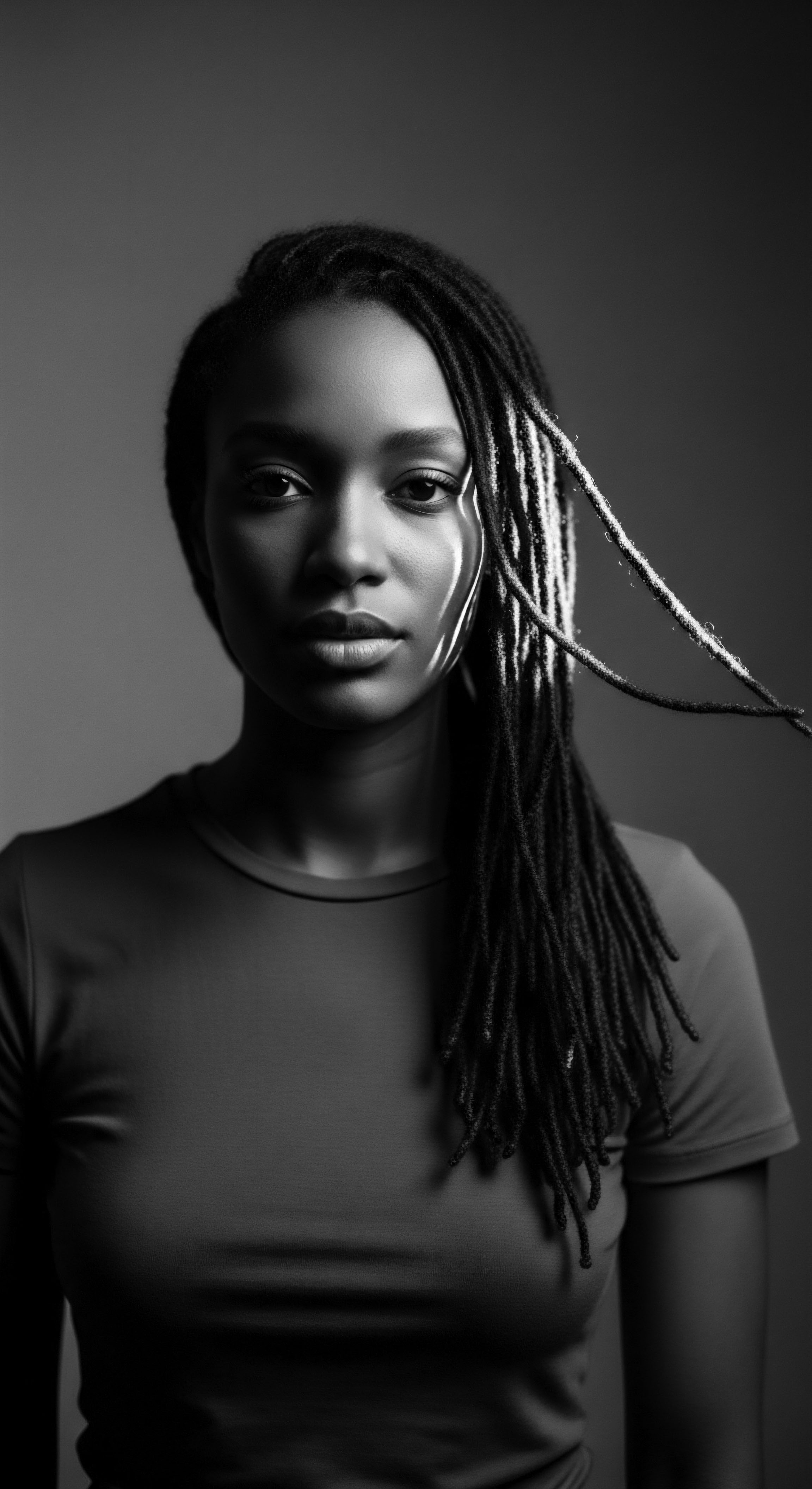
Roots
For those whose heritage springs from the African continent, a headwrap is never merely a piece of fabric. It is a whispered tale, a declaration, a silent yet potent dialogue woven into the very strands it protects. To understand how headwraps continue to mark Black pride and a rich lineage today, we must first descend into the elemental foundations of textured hair itself, acknowledging how ancient wisdom shaped early interactions with our crowns. Our journey begins at the source, where biology and ancestral practices intertwined, creating a profound relationship with what grows from our scalps.

How Do Headwraps Physically Interact with Textured Hair?
The physical interaction between a headwrap and textured hair is one of intimate accord, an alliance forged over millennia. Textured hair, with its unique helical structure, whether tightly coiled, deeply curled, or softly wavy, possesses specific needs. Its inherent tendency towards dryness, owing to the winding path sebum must travel down the hair shaft, makes it particularly vulnerable to environmental aggressors and friction. Here, the headwrap steps in, offering a protective embrace.
It acts as a shield, warding off dust, harsh sun, and abrasive elements that might otherwise compromise the delicate cuticle layers. This protective function is not a modern discovery; it reflects generations of accumulated knowledge concerning hair health and preservation.
A headwrap, in its physical capacity, serves as a vigilant guardian, preserving the innate vitality of textured hair against external pressures.
Consider the science of friction. Cotton pillowcases or rough clothing materials can draw moisture from hair and cause breakage as strands rub against them. A smooth fabric like silk or satin, often the chosen lining for modern wraps, creates a low-friction environment. This simple act of covering the hair, known to ancestors long before laboratories could measure cuticle damage, minimizes mechanical stress and preserves the hair’s natural moisture balance.
The wrapping itself also secures styles, extending their life and reducing the frequency of manipulation, which in turn diminishes the potential for strain on individual strands. This conscious act of preservation speaks volumes about the value placed on healthy hair, a value deeply rooted in ancestral care practices.
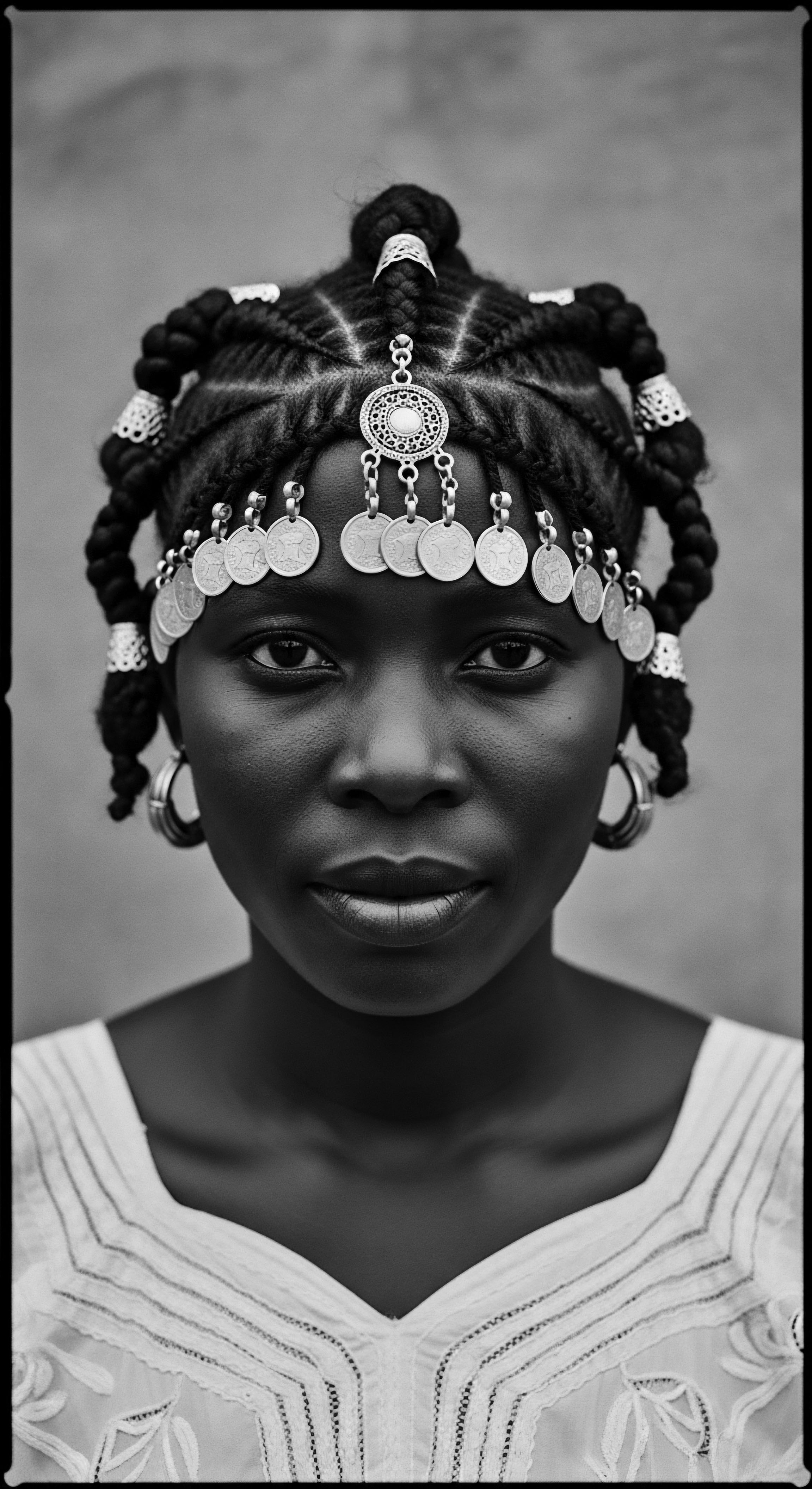
Ancestral Beliefs Guiding Headwrap Customs
Across various ancestral African communities, hair held a sacred position, a conduit for spiritual connection and an outward representation of lineage, status, and community standing. The head, as the highest point of the body, was often seen as a spiritual gateway. To adorn or cover the head with intention became a practice imbued with deep meaning.
Headwraps, in this context, were not merely decorative; they were expressions of belief, often signaling an individual’s marital status, age, or spiritual calling. In some traditions, specific patterns or colors held symbolic communication, understood within the community.
Oral traditions speak of how head coverings would shield the wearer from negative influences, or perhaps allow a person to concentrate spiritual energy. This reverence for the scalp and its adornment demonstrates a sophisticated understanding of holistic well-being, where physical protection and spiritual harmony were inseparable. The materials chosen, sometimes hand-woven with ancestral dyes or imbued with particular herbs, further deepened these connections. This ancestral wisdom, passed down through generations, continues to shape the contemporary significance of headwraps, making them more than just attire but rather extensions of identity and spirit.

Early Forms of Head Coverings for Protection
The earliest iterations of head coverings in Africa were born from necessity and a profound respect for hair. In sun-drenched landscapes and dusty environments, protecting the scalp and hair from harsh elements was a practical matter of survival and health. Early headwraps, often crafted from locally sourced materials such as cotton, bark cloth, or animal hides, served as shields against the intense sun, wind, and sand. They also acted as a means of managing and preserving intricate hairstyles, some of which took days to create and were meant to last for weeks or even months.
Consider the agricultural rhythms of ancient communities; women working in fields would protect their elaborate coiffures from dirt and debris. This practical application intertwined with cultural practices, gradually establishing head coverings as a ubiquitous part of daily life. The design and fabric selection would often correlate with the local climate and the texture of hair being protected.
Denser, more insulating materials might be used in cooler regions, while lighter, breathable fabrics would be preferred in warmer climes, all serving the underlying purpose of safeguarding the hair and scalp. This fundamental approach to hair care, rooted in environmental adaptation and observation, laid the groundwork for the enduring traditions we see today.
- Dukus ❉ Common in Ghanaian culture, often serving as a practical cover for daily chores and ceremonies.
- Geles ❉ Ornate headwraps of Yoruba and Igbo women in Nigeria, indicating status and worn for special occasions, with elaborate tying techniques.
- Doeks ❉ The term for headwraps in Southern Africa, particularly South Africa and Namibia, worn for varying occasions from daily wear to formal events.
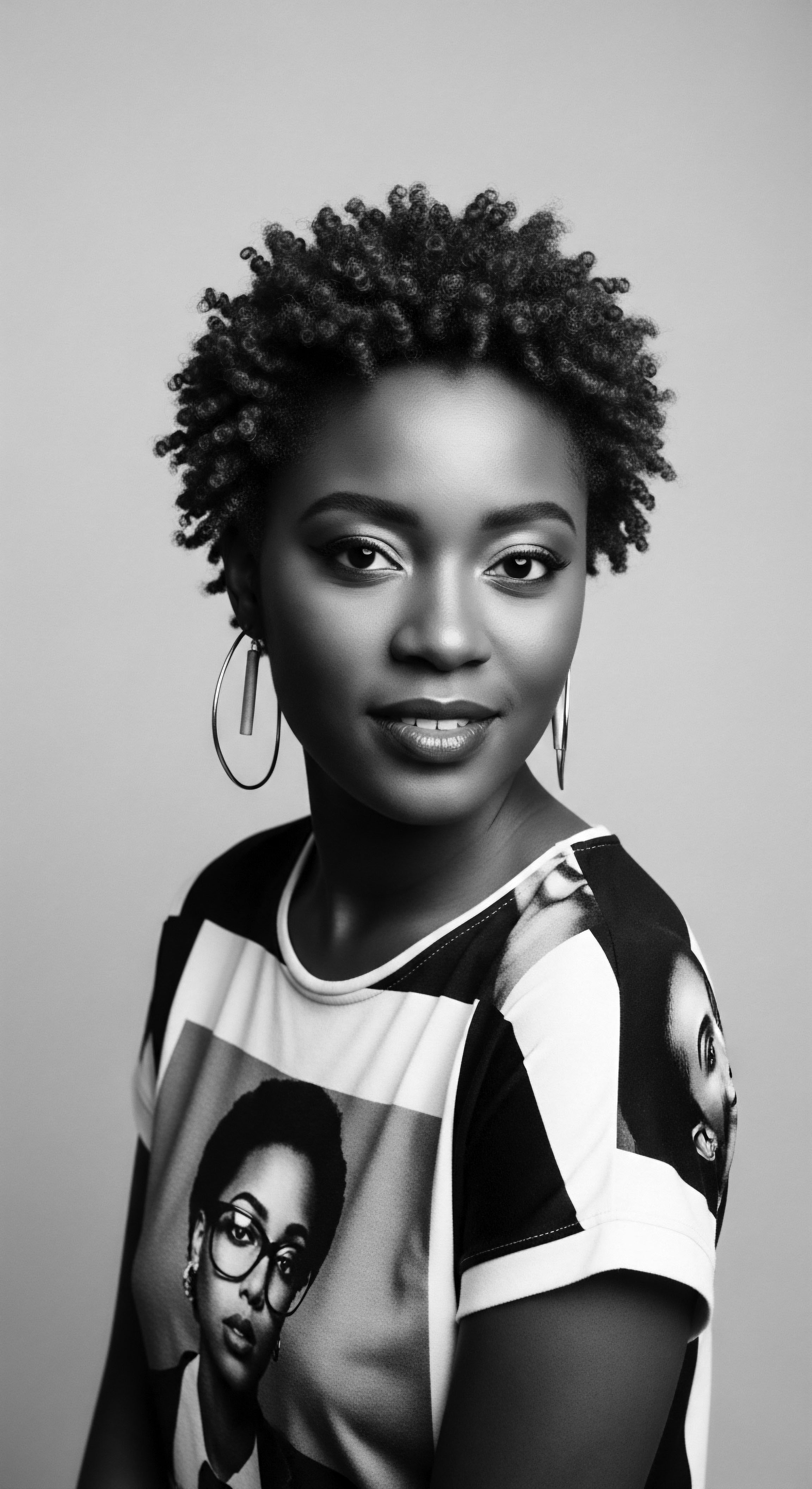
Ritual
From the ancient grounds where elemental truths of hair were first learned, the story of headwraps moves into the living cadence of daily existence and community gatherings. These coverings transcend simple function, becoming integral to the rituals of care, adornment, and shared identity. The hands that tie a headwrap today echo countless generations of hands that performed the same motions, binding present practices to an expansive cultural past. Headwraps continue to serve as a cornerstone in styling textured hair, transforming not only appearance but also reinforcing communal bonds and cultural memory.

How Did Traditional Styling Adapt to Headwrap Use?
Traditional styling practices for textured hair were never separate from the use of head coverings. In many ancestral communities, elaborate hairstyles were crafted with the understanding that they might be protected or adorned by a wrap for extended periods. Protective styles, such as braids, twists, and coils, were not merely aesthetic choices; they were strategies for maintaining hair health in various climates and during demanding activities.
The headwrap often served as the final touch, sealing in moisture, preventing tangles, and extending the longevity of these intricate designs. This symbiotic relationship meant that the art of hair styling and the practice of head wrapping developed side-by-side, each informing the other.
The act of wrapping itself became a skill passed down through generations, sometimes within families or community groups. The specific folds, knots, and fabric choices were elements of a silent language, communicating social standing, marital status, or even personal disposition. For instance, in some West African traditions, the height and grandeur of a particular headwrap, known as a Gele, could signify wealth or social standing, with starching techniques employed to make the fabric stand regally. This attention to detail demonstrates how deeply intertwined aesthetic expression and practical considerations were within traditional hair care and adornment.

What Roles Do Headwraps Play in Community Gatherings?
Headwraps hold a central place in the fabric of Black community gatherings, acting as visible markers of shared heritage and collective celebration. At weddings, naming ceremonies, funerals, and religious services, headwraps often become a vibrant canvas of expression. The patterns, colors, and wrapping styles chosen for such events are far from arbitrary; they often carry specific cultural or familial meanings, signaling respect, joy, mourning, or unity. A community gathering often provides an opportunity for individuals to showcase their skill in tying, presenting wraps that are both artful and deeply personal.
Beyond formal occasions, headwraps are also part of everyday community life, observed in marketplaces, at family meals, or during casual visits. This ubiquitous presence reinforces a sense of belonging and continuity across generations. The simple sight of a sister, aunt, or grandmother in a beautifully tied wrap communicates a message of cultural affirmation. It is a visual dialogue, a testament to the enduring traditions that bind communities together, a subtle yet powerful reinforcement of collective memory and pride.
| Historical Context Pre-colonial Africa |
| Primary Function Related to Hair Protection from elements, preservation of complex styles, hygiene. |
| Symbolic Evolution Status, identity, spiritual connection, beauty. |
| Historical Context Enslavement Era (Americas) |
| Primary Function Related to Hair Forced concealment, practical labor wear, rudimentary protection. |
| Symbolic Evolution Covert resistance, communication, assertion of hidden dignity. |
| Historical Context Post-Emancipation to Mid-20th Century |
| Primary Function Related to Hair Continuity of protective practice, domestic labor association. |
| Symbolic Evolution Homeliness, sometimes stigma; quiet preservation of tradition. |
| Historical Context Civil Rights Era & Beyond |
| Primary Function Related to Hair Hair protection, celebration of Afrocentric styles. |
| Symbolic Evolution Assertion of Black pride, cultural reclaim, political statement. |
| Historical Context The headwrap's journey through history underscores its adaptability as both a practical tool and a profound symbol of heritage. |
The communal experience of hair care, often involving shared styling sessions and the exchange of knowledge, further strengthens the role of headwraps. Older generations might share stories of their own experiences with headwraps, detailing how they were worn for specific events or how they provided comfort during challenging times. This oral transmission of wisdom ensures that the heritage of headwraps, with its connections to hair health and communal life, continues to flourish. The fabric, the fold, the final knot ❉ each element carries a whisper of history, a shared heritage that binds us to those who came before.
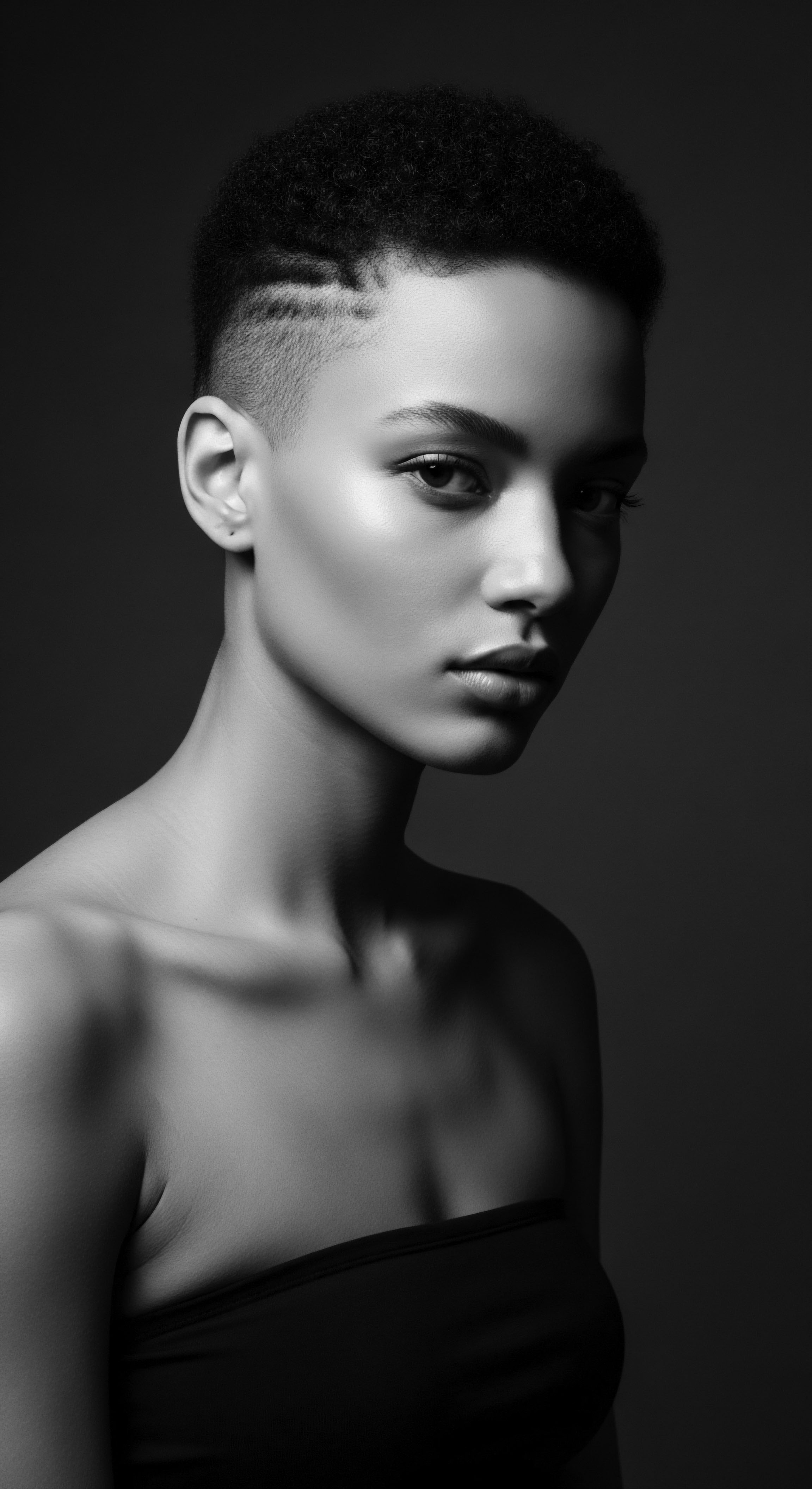
Relay
Our understanding of headwraps shifts now to a more advanced realm, where cultural narratives and deep contextual explorations unveil their persistent power as symbols of Black pride and heritage. This is where the living legacy meets the contemporary moment, where threads of history are re-spun into statements of identity, resistance, and self-expression. The enduring presence of headwraps in diverse Black communities speaks to a profound cultural resilience, a refusal to surrender ancestral wisdom in the face of shifting social tides.
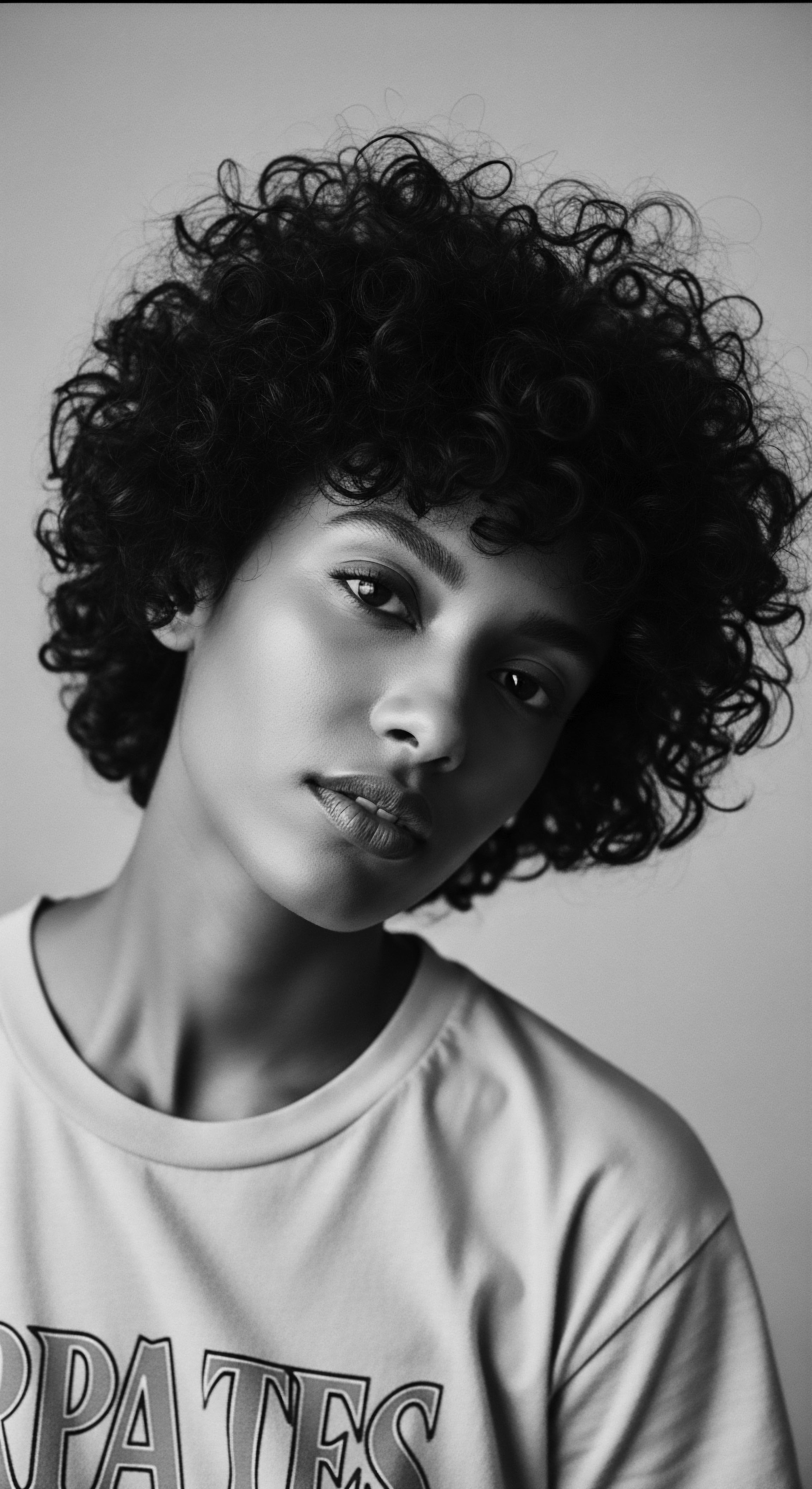
How Do Headwraps Function as Symbols of Resistance?
Headwraps, throughout history, have served as potent symbols of resistance against oppressive forces. Their capacity to conceal and simultaneously reveal aspects of identity made them a powerful tool for defiance. During the transatlantic slave trade, enslaved Africans carried with them the traditions of head covering, which in their new, brutal environment, took on layers of meaning. While often forced upon them as a marker of servitude, Black women ingeniously transformed these mandates into acts of quiet, yet profound, rebellion.
They used vibrant, often “forbidden” fabrics and created elaborate wrapping styles that overtly challenged the very intention of subjugation. This creative subversion allowed them to maintain a sense of dignity and cultural continuity in the face of dehumanization.
From enforced covering to defiant display, the headwrap consistently translates oppression into a visible act of self-determination.
Consider the infamous Tignon Laws of 1786 in Spanish colonial Louisiana. These laws mandated that free women of color wear a tignon, or headwrap, to suppress their perceived “extravagance” in dress and to distinguish them from white women. The underlying aim was to restrict the social mobility and perceived attractiveness of Black women, whose elaborate hairstyles and attire often rivaled or surpassed those of their white counterparts. Instead of complying meekly, these women adorned their mandated head coverings with luxurious fabrics, intricate patterns, and sometimes even jewels, transforming a mark of supposed subservience into a bold declaration of wealth, status, and inherent beauty.
This historical act of turning an instrument of oppression into a statement of unparalleled style is a profound example of how headwraps became a vehicle for resistance, powerfully illuminating their connection to textured hair heritage and Black experiences. This deliberate transformation underscores a resilience that finds beauty and strength even in adversity, a legacy passed through generations.
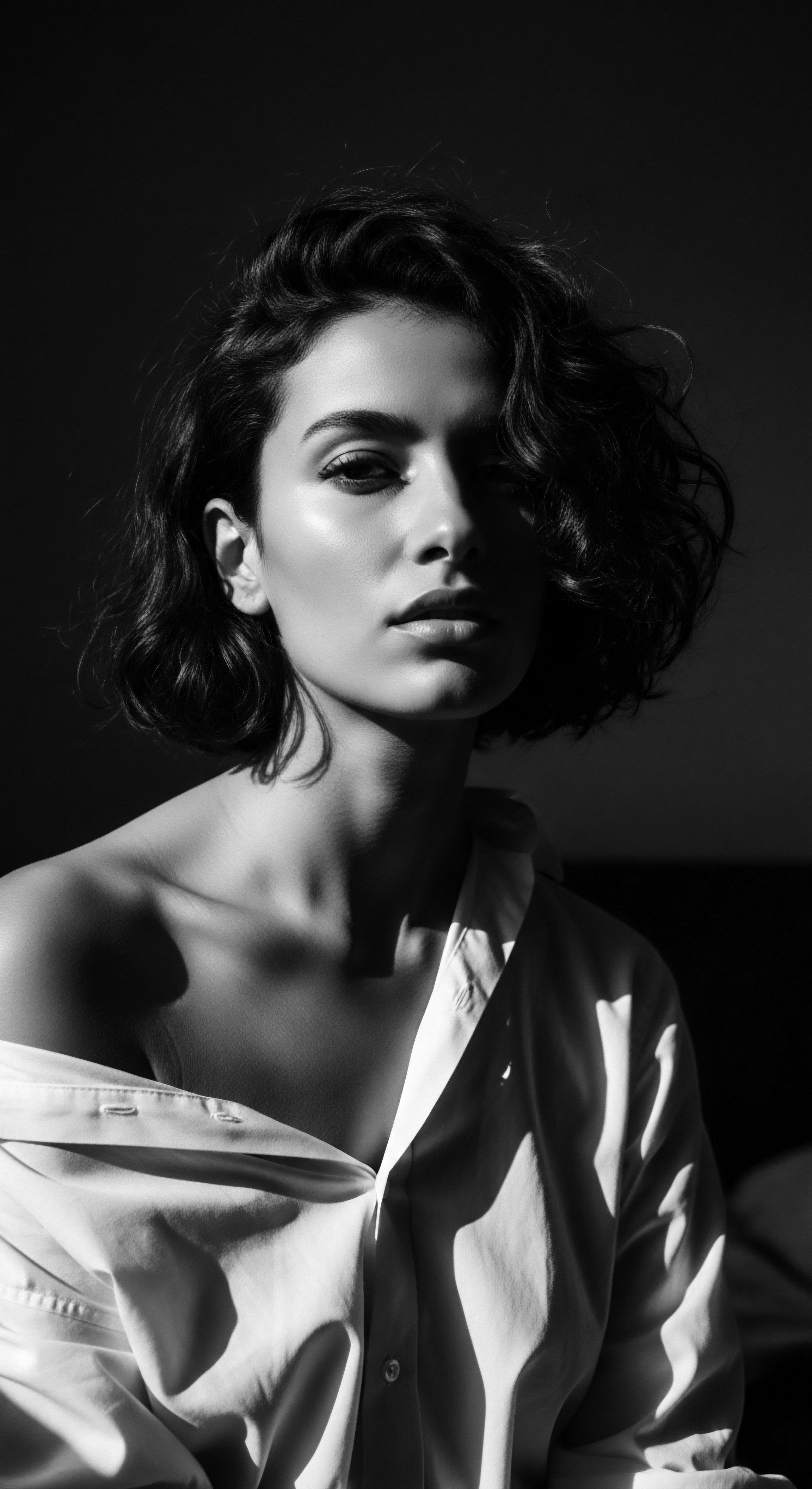
What Generational Messages Do Headwraps Carry?
Headwraps carry a multitude of generational messages, speaking volumes about the intergenerational transfer of cultural practices and knowledge. They are a tangible link to ancestors, a living archive of survival and triumph. The act of receiving a headwrap, or learning how to tie one, often becomes a rite of passage, connecting younger generations to the wisdom of elders. This continuity is especially significant in contexts where historical disruptions sought to sever ties to African heritage.
Today, headwraps convey messages of self-acceptance and affirmation of natural hair. The rise of the natural hair movement, particularly since the late 20th century, saw a resurgence in the popularity of headwraps as a means of celebrating authentic Black beauty. They serve as a powerful counter-narrative to Eurocentric beauty standards that historically denigrated textured hair.
By adorning a headwrap, individuals publicly declare their connection to a rich cultural lineage, their appreciation for their hair’s natural state, and their solidarity with a global community. This visible choice transmits a message of pride and belonging across ages, fostering a sense of shared identity and collective strength.
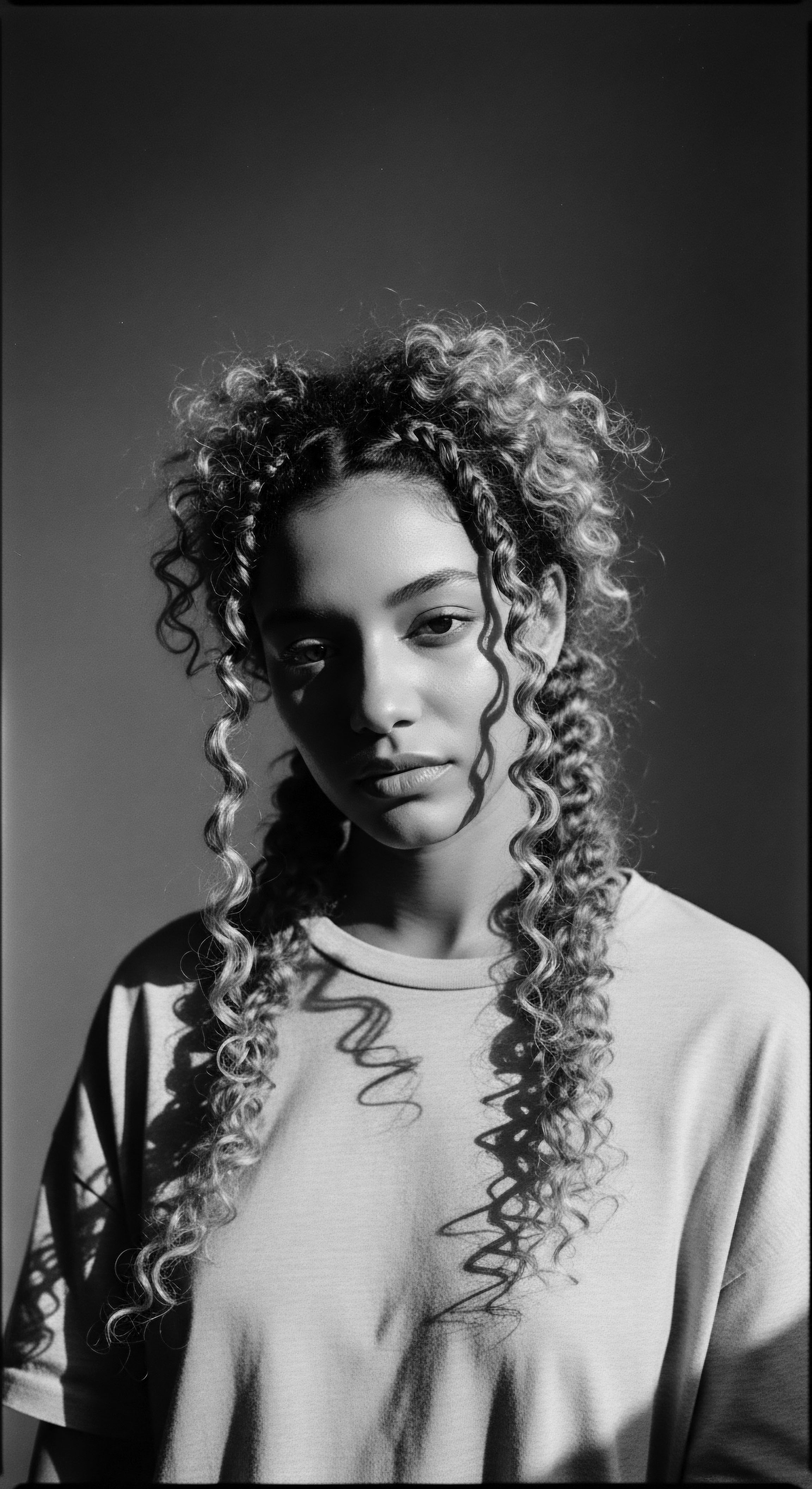
Modern Interpretations of Ancient Adornment
Contemporary expressions of headwraps are as varied and dynamic as the diaspora itself, showcasing both a reverence for tradition and a spirit of innovation. While drawing from ancient practices, modern wearers reinterpret these coverings to suit current fashion sensibilities, individual expression, and practical needs. From the casual convenience of a pre-tied wrap for busy mornings to the elaborate, artistic constructions seen on runways and at cultural festivals, headwraps continue to evolve.
The advent of accessible online tutorials and a wider array of fabric choices has democratized the art of head wrapping, allowing more individuals to experiment with styles that honor their heritage while reflecting their personal aesthetic. This modern iteration of an ancient adornment speaks to a living, breathing heritage that adapts and expands. It acknowledges that tradition is not static, but a flowing river, capable of carrying forward the wisdom of the past while carving new paths for future generations. The versatility of headwraps in today’s world solidifies their standing as a timeless symbol of identity and resistance.
- Protection ❉ Shielding hair from environmental damage and maintaining moisture, especially for fragile textured strands.
- Expression ❉ A canvas for personal style, artistic flair, and cultural affiliation, often through vibrant patterns.
- Affirmation ❉ A declaration of Black pride, a visual link to ancestral roots, and a celebration of natural hair textures.
- Convenience ❉ A practical solution for managing hair on busy days or between styles.

Regimen of Radiance
The care of textured hair, particularly Black and mixed-race hair, has always been intertwined with a holistic approach, often drawing from ancestral wisdom. Headwraps, in their ongoing symbolism of Black pride and heritage, play a significant, yet often understated, role in this regimen of radiance. They are not merely an adornment but an integral component of preserving hair health, especially during vulnerable periods like sleep, and addressing specific hair concerns with practices deeply rooted in history.
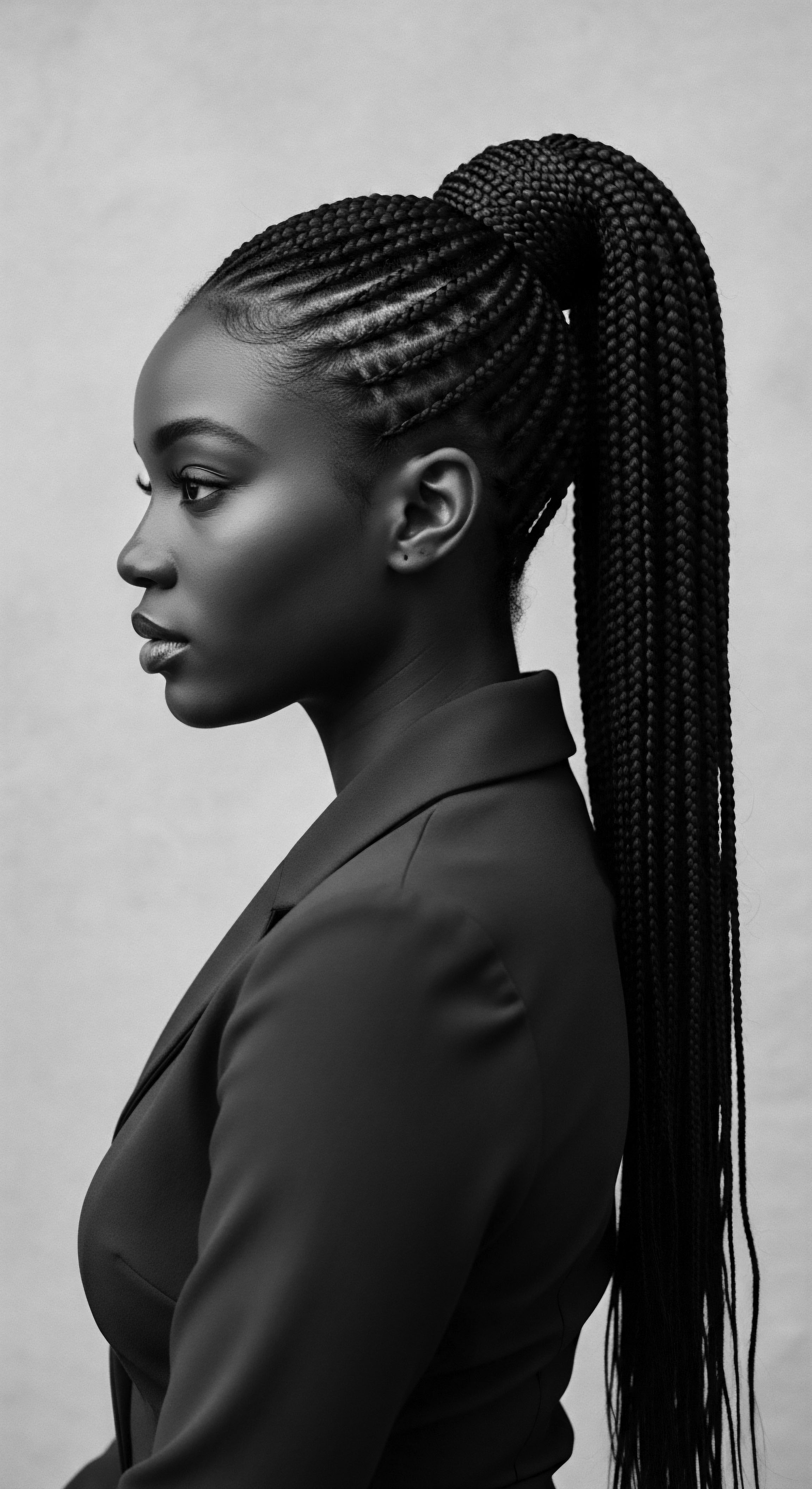
How Do Headwraps Aid Nighttime Hair Protection?
The nightly ritual of covering hair has been a cornerstone of textured hair care for centuries, a practice inherited from generations past. Headwraps, whether in the form of satin-lined bonnets, silk scarves, or expertly tied fabric, provide an essential protective layer while one sleeps. The friction generated by cotton pillowcases can strip moisture from hair strands, leading to dryness, breakage, and tangles. This is particularly true for coily and curly textures, which are more susceptible to moisture loss due to their unique structure.
A smooth, non-absorbent barrier, such as silk or satin, minimizes this friction, allowing hair to glide freely and retain its natural oils and applied moisture. This simple yet effective measure dramatically reduces mechanical damage, preserves carefully crafted styles, and promotes healthier hair growth over time. The wisdom behind this practice is ancestral; long before scientific understanding of hair protein structures, communities observed that covering hair at night yielded healthier, more manageable results. This act of care speaks to a deep, inherited understanding of hair’s needs and the importance of its preservation.
| Traditional Practice (Pre-Colonial) Covering hair with soft cloths or leaves for sleep. |
| Underlying Principle (Heritage Link) Protecting hair from environmental wear and damage. |
| Modern Parallel/Benefit Minimizing friction, retaining moisture, preserving style. |
| Traditional Practice (Pre-Colonial) Using natural oils/butters under wraps. |
| Underlying Principle (Heritage Link) Nourishment and sealing in moisture. |
| Modern Parallel/Benefit Enhanced hydration, reduced breakage, scalp health. |
| Traditional Practice (Pre-Colonial) Headwraps as a symbol of modesty/status before rest. |
| Underlying Principle (Heritage Link) Holistic self-respect and care for the crown. |
| Modern Parallel/Benefit Self-care ritual, mental well-being, connection to cultural identity. |
| Traditional Practice (Pre-Colonial) The enduring practice of nighttime hair covering reflects an ancestral understanding of textured hair's unique requirements, linking daily self-care to a rich heritage. |

What Ancestral Remedies Do Headwraps Complement?
Headwraps do not exist in isolation within the realm of textured hair care; they often complement and enhance the efficacy of ancestral remedies and natural ingredients. Across African cultures, various plant-based oils, butters, and herbs were used to nourish and protect hair. Think of shea butter, castor oil, and various infusions from local flora. These ingredients were applied to the scalp and strands to impart moisture, strength, and vitality.
The headwrap, when worn over hair treated with these traditional emollients, helps to create a warm, contained environment that encourages deeper penetration of the beneficial compounds. It functions as a gentle incubator, allowing the hair and scalp to truly absorb the goodness of these ancestral preparations. This method of sealing in treatments prolongs their efficacy and safeguards the hair from external elements that might diminish their impact.
The synergy between the traditional remedy and the protective covering reflects a sophisticated, holistic approach to hair wellness, one where each element serves to support the other in maintaining the hair’s radiance. This ancestral practice of nurturing hair from within, shielded by a thoughtful covering, continues to shape contemporary natural hair regimens.
Consider specific instances where headwraps are used today to help manage textured hair challenges, mirroring historical solutions. For instance, a person experiencing temporary hair loss might find solace and protection in a headwrap. While modern medicine provides diagnoses, the cultural and psychological comfort of a head covering, which also provides a protective barrier, aligns with ancestral wisdom that recognized the head as a sacred space in need of safeguarding, both physically and spiritually.
The enduring connection between headwraps and hair care is not merely coincidental; it is a testament to generations of wisdom that recognized the specific needs of textured hair. From practical protection against the elements to facilitating deeper product absorption and safeguarding delicate strands during sleep, headwraps remain a timeless component of a holistic hair regimen. Their continued presence signifies not only a practical tool but a living monument to Black pride and the deep heritage of hair care.
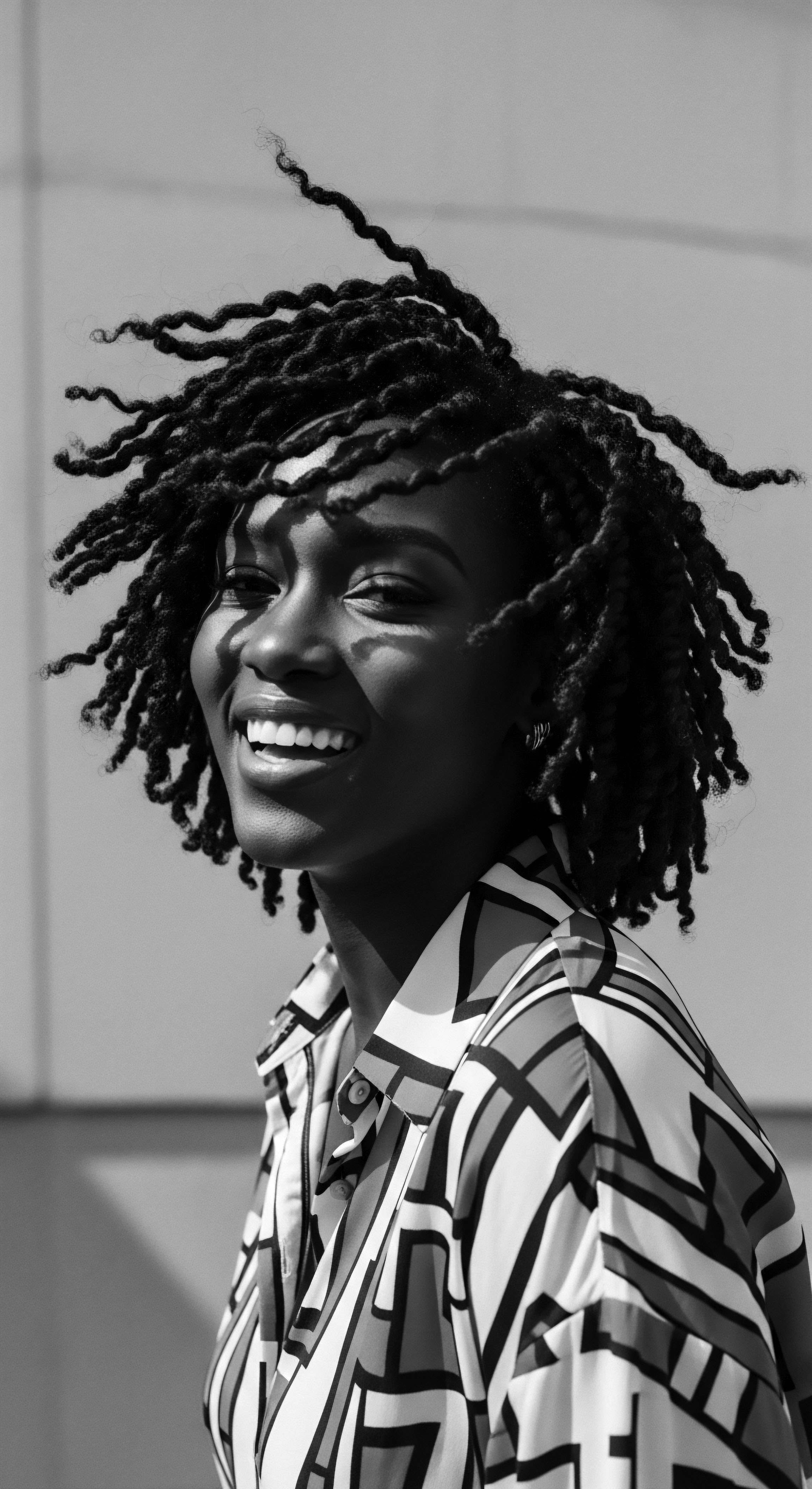
Reflection
The journey through headwraps, from their earliest forms to their present-day expressions, reveals a profound meditation on textured hair, its heritage, and its care. These seemingly simple pieces of fabric are, in truth, a living, breathing archive. They speak of resilience forged in the crucible of adversity, of beauty reclaimed against attempts at erasure, and of an unbreakable spirit that finds voice in every fold and hue. Headwraps are a testament to the enduring power of ancestral wisdom, a wisdom that understood the intricate connection between our outward presentation and our inner strength.
When we consider a headwrap today, we are not simply observing a fashion choice. We witness a continuation of deep cultural practices, a celebration of textured hair in all its glory, and a silent, yet powerful, declaration of selfhood. Each wrap carries within its fibers the whispers of those who came before, reminding us that heritage is not a static concept confined to history books.
Heritage breathes, adapts, and shines through the choices we make, the traditions we uphold, and the stories we allow our hair to tell. The headwrap stands as an enduring symbol, a vibrant marker of a legacy that flows, unbroken, from the past into the boundless possibilities of tomorrow.
References
- Griebel, Helen Bradley. The African American Woman’s Headwrap ❉ Unwinding the Symbols. Art, Design, and Visual Thinking, 2007.
- Hall, Gwendolyn Midlo. Africans in Colonial Louisiana ❉ The Development of Afro-Creole Culture in the Eighteenth Century. Louisiana State University Press, 1992.
- Jacobs, Carolyn. The Headwrap ❉ A Journey of Self-Discovery. Independent Publisher, 2017.
- Byrd, Ayana, and Lori L. Tharps. Hair Story ❉ Untangling the Roots of Black Hair in America. St. Martin’s Press, 2001.
- Mercer, Kobena. Welcome to the Jungle ❉ New Positions in Cultural Studies. Routledge, 1994.
- hooks, bell. Black Looks ❉ Race and Representation. South End Press, 1992.
- Diedrich, Maria, and John Michael Spencer. Black Imagination and the Middle Passage. Oxford University Press, 2012.
